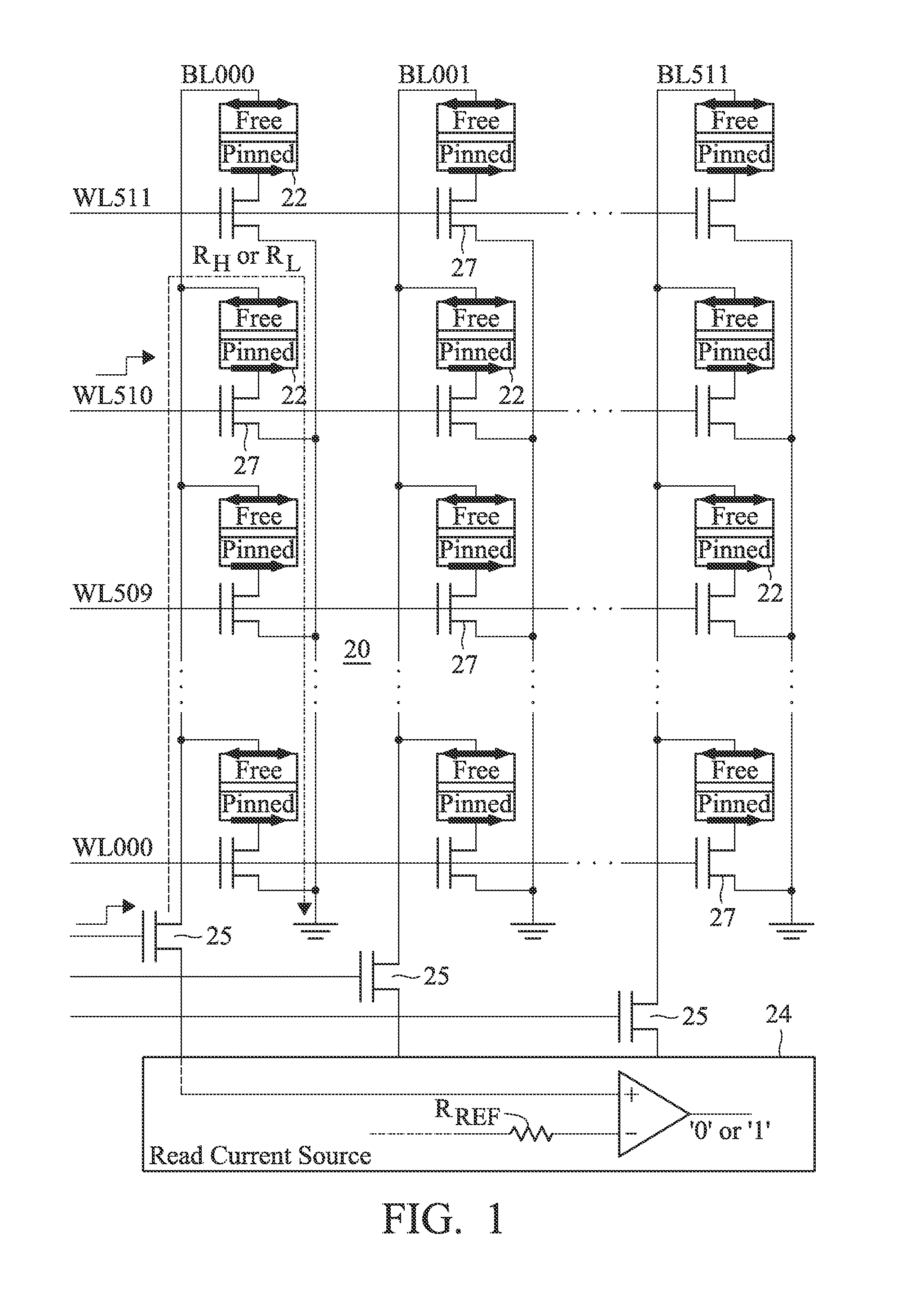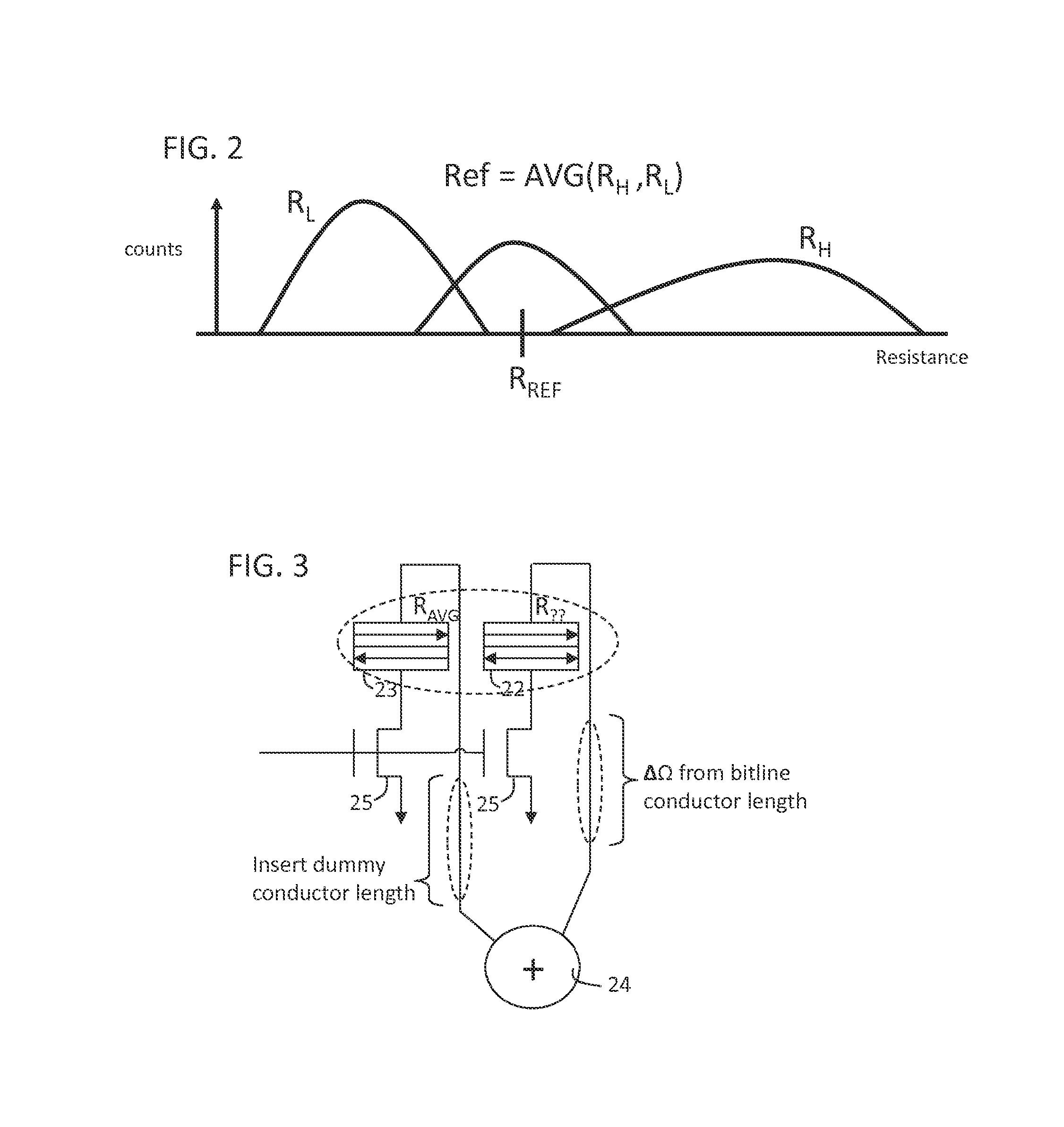Adjusting reference resistances in determining MRAM resistance states
- Summary
- Abstract
- Description
- Claims
- Application Information
AI Technical Summary
Benefits of technology
Problems solved by technology
Method used
Image
Examples
Embodiment Construction
[0042]A memory bit cell using magnetoresistive techniques as provided herein uses at least one magnetic tunnel junction (MTJ) element for each bit cell. Each MTJ element comprises two superimposed magnetic layers separated by a nonmagnetic barrier layer. One of the magnetic layers has a permanent magnetic field aligned in a given direction (the pinned layer) and the other magnetic layer has a changeable magnetic field alignment (the free layer).
[0043]The electrical resistance of the superimposed layers (namely the series resistance through the pinned, barrier and free layers) is different when the magnetic fields of the free and pinned layers are aligned with one another (parallel) versus when the magnetic fields of the free and pinned layers are opposite (anti-parallel). The MTJ element is in a low resistance state RL when the magnetic field alignments are parallel, or in a high resistance state RH when the magnetic field orientations of the two layers are anti-parallel.
[0044]The m...
PUM
 Login to View More
Login to View More Abstract
Description
Claims
Application Information
 Login to View More
Login to View More - R&D
- Intellectual Property
- Life Sciences
- Materials
- Tech Scout
- Unparalleled Data Quality
- Higher Quality Content
- 60% Fewer Hallucinations
Browse by: Latest US Patents, China's latest patents, Technical Efficacy Thesaurus, Application Domain, Technology Topic, Popular Technical Reports.
© 2025 PatSnap. All rights reserved.Legal|Privacy policy|Modern Slavery Act Transparency Statement|Sitemap|About US| Contact US: help@patsnap.com



